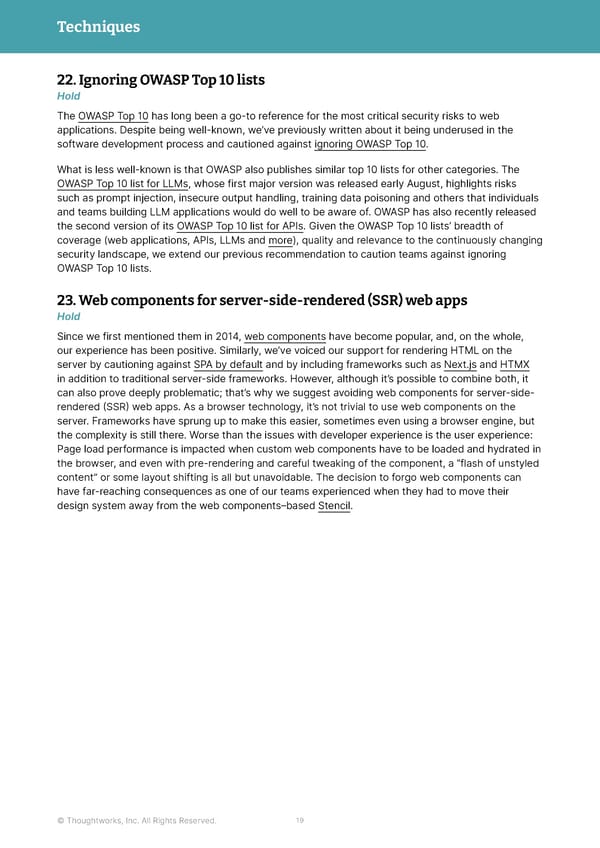Techniques 22. Ignoring OWASP Top 10 lists Hold The OWASP Top 10 has long been a go-to reference for the most critical security risks to web applications. Despite being well-known, we’ve previously written about it being underused in the software development process and cautioned against ignoring OWASP Top 10. What is less well-known is that OWASP also publishes similar top 10 lists for other categories. The OWASP Top 10 list for LLMs, whose first major version was released early August, highlights risks such as prompt injection, insecure output handling, training data poisoning and others that individuals and teams building LLM applications would do well to be aware of. OWASP has also recently released the second version of its OWASP Top 10 list for APIs. Given the OWASP Top 10 lists’ breadth of coverage (web applications, APIs, LLMs and more), quality and relevance to the continuously changing security landscape, we extend our previous recommendation to caution teams against ignoring OWASP Top 10 lists. 23. Web components for server-side-rendered (SSR) web apps Hold Since we first mentioned them in 2014, web components have become popular, and, on the whole, our experience has been positive. Similarly, we’ve voiced our support for rendering HTML on the server by cautioning against SPA by default and by including frameworks such as Next.js and HTMX in addition to traditional server-side frameworks. However, although it’s possible to combine both, it can also prove deeply problematic; that’s why we suggest avoiding web components for server-side- rendered (SSR) web apps. As a browser technology, it’s not trivial to use web components on the server. Frameworks have sprung up to make this easier, sometimes even using a browser engine, but the complexity is still there. Worse than the issues with developer experience is the user experience: Page load performance is impacted when custom web components have to be loaded and hydrated in the browser, and even with pre-rendering and careful tweaking of the component, a “flash of unstyled content” or some layout shifting is all but unavoidable. The decision to forgo web components can have far-reaching consequences as one of our teams experienced when they had to move their design system away from the web components–based Stencil. © Thoughtworks, Inc. All Rights Reserved. 19
 Thoughtworks Technology Radar Page 18 Page 20
Thoughtworks Technology Radar Page 18 Page 20